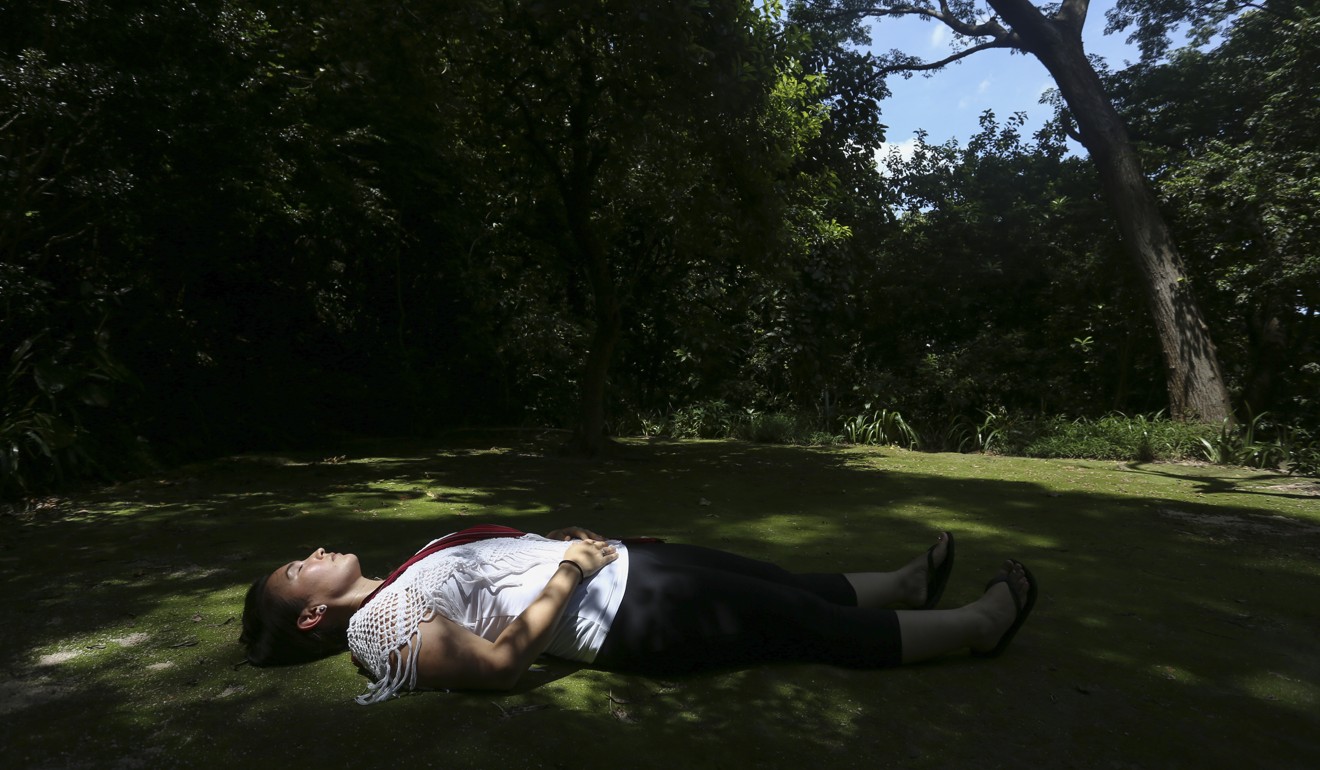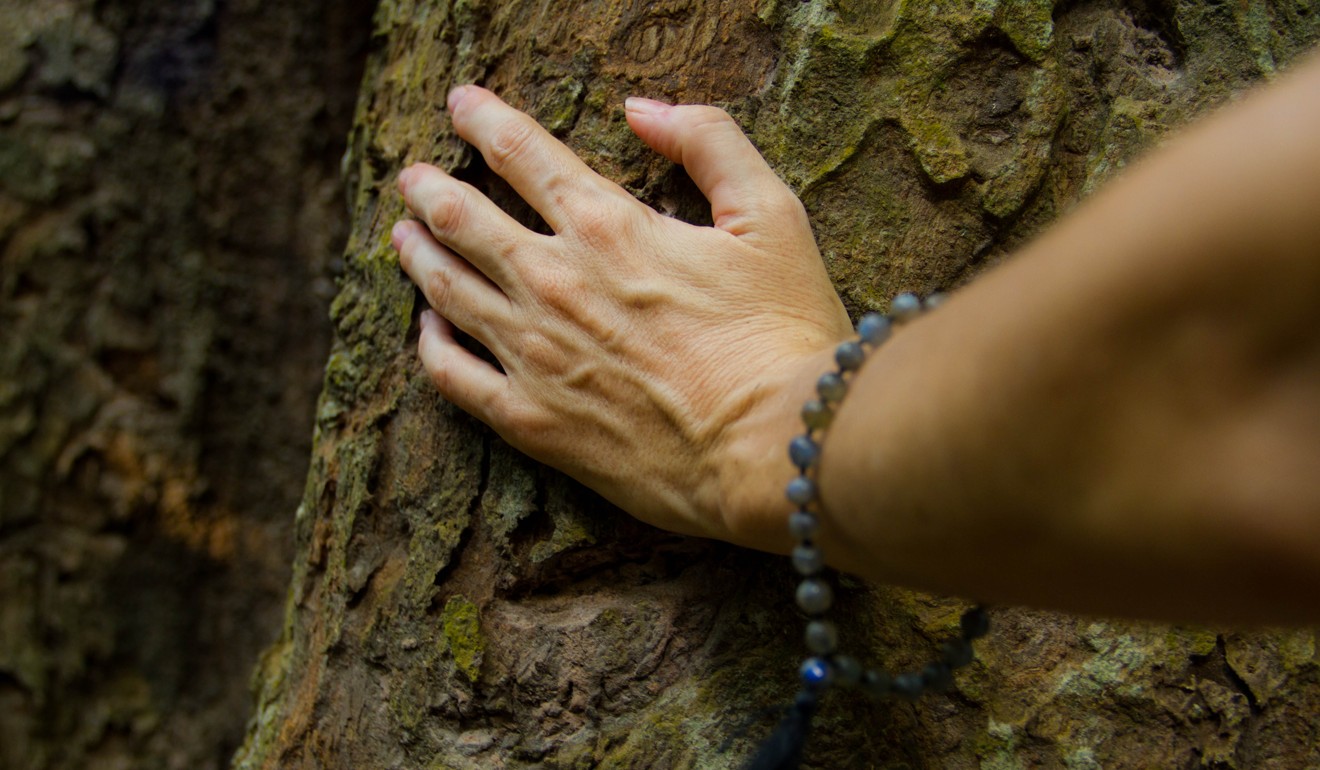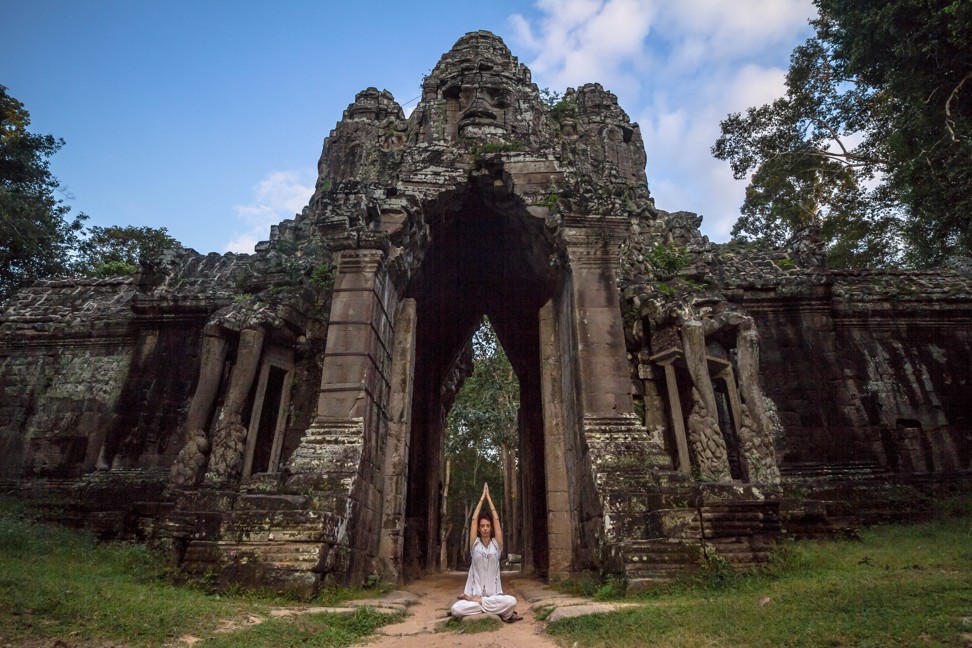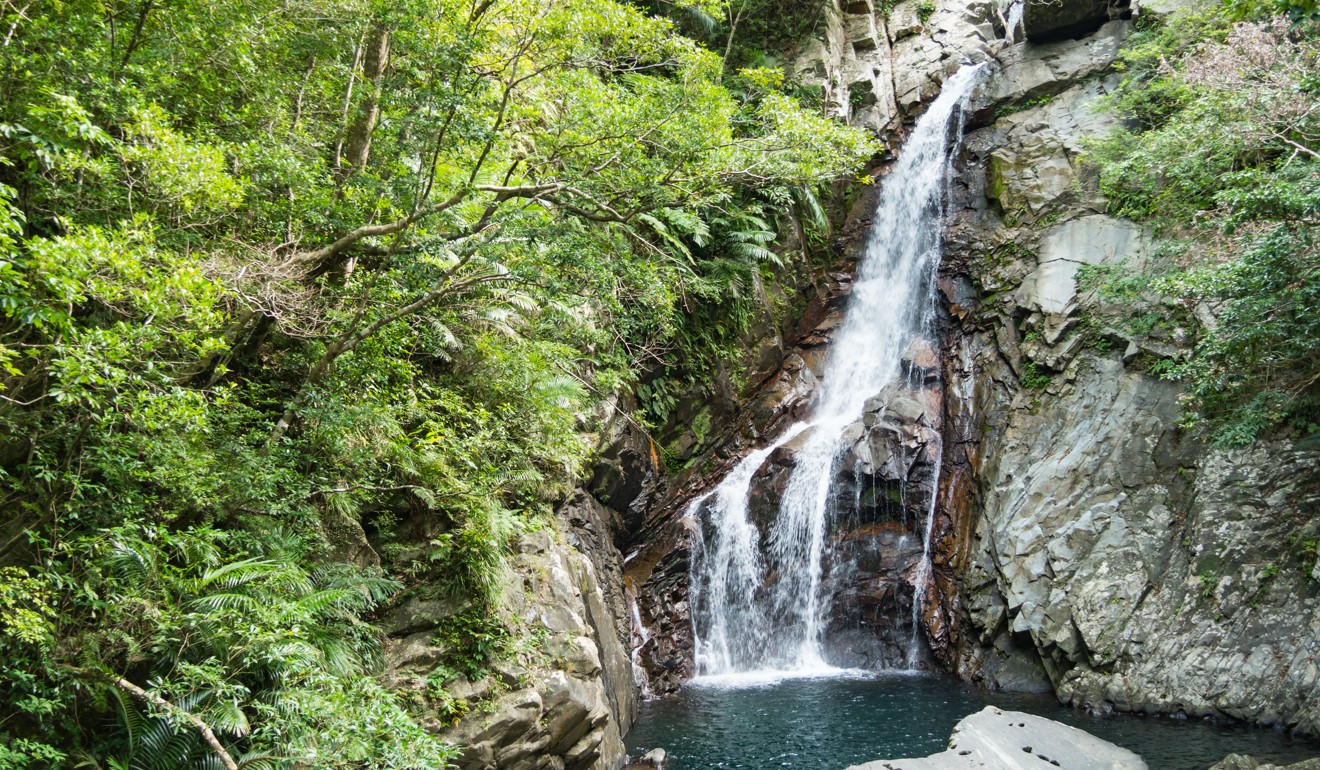
The latest natural therapy: how Japanese forest bathing gets you back in touch with yourself and mother earth
A walk through trees or sitting under a tree have been shown to be relaxing and therapeutic. Forest bathing, or shinrin-yoku as the Japanese call it, lowers blood pressure and boosts the immune system. So get out there and hug a tree
There is something about escaping the city and standing below a canopy of trees, breathing in fresh air and listening to birdsong in the distance that evokes a sense of calm – and it is exactly this insight that forest bathing builds upon.
“The forest is the therapist, the guide just opens the doors,” says Jasmine Nunns, Hong Kong’s first certified forest bathing guide, who leads meditative walks through the trees.

“Living in Hong Kong, we’re so separated from one another,” says Nunns, who runs Kembali, which offers nature and forest walks that use the healing power of nature as a way to rebalance life. “There’s a lot of competition, a lot of stress and targets to reach. Nature is a place where I can reconnect with myself and the land. It’s a reawakening and that’s therapeutic in itself.”
While nature-based therapy stretches back centuries, the practice of shinrin-yoku – literally translated as forest bathing, or taking in the forest atmosphere – was developed in Japan in the 1980s, when it was adopted as part of the country’s national health programme. Research went on to reveal a raft of health benefits, including reducing stress, boosting the immune system and lowering blood pressure.

So how exactly do you forest bathe? “Forest bathing is neither hiking or mountain climbing,” says Myra Suzuki, of the Forest Therapy Society Japan. Instead, it is a personal journey, where participants take the time to absorb nature and connect with their surroundings.
While guided walks are becoming more popular, a simple stroll through the countryside appreciating everything along the way can suffice. This doesn’t have to be in a forest, says Nunns. It can be a favourite tree to spend an hour sitting under, taking a break at that favourite spot while hiking and really savouring the moment, or strolling along that lonely stretch of beach on holiday.
Trouble sleeping? In pain? Why walking barefoot on grass could help
“The real challenge is to silence the mind and be open to experiencing something that’s different,” says Nunns, adding that using all your senses to connect with nature is part of the almost meditative therapy.
Taking it slow and savouring it slow also helps, especially in a city like Hong Kong, where people are used to getting from A to B as quickly as possible.

“Being in nature and surrounded by greenery allows you to de-stress and appreciate the natural surroundings,” says Evi-Elli La Valle, director of marketing at Navutu Dreams (navutudreams.com) in Siem Reap, Cambodia.
For four years, the wellness retreat has offered guided forest bathing trails through the ancient forests that surround Angkor Wat. As a spiritual site, Angkor is the perfect setting to reconnect with nature and the self, says La Valle.

“There is something sacred about the Angkor temples that demands an immediacy of presence and mindfulness,” she says. “In addition to the escape from city chaos, the palpable history places people at the peak of a meditative state. Having nature woven through the feats of mankind, with roots breaking through stone, is a reminder of the awe-inspiring power of nature.”

Suzuki says there are more than 60 accredited forest therapy camps dotted throughout Japan to choose from. Kunigami village in Okinawa, for example, is surrounded by gently sloping mountains, twisting rivers and deep valleys and has several centres offering forest bathing trails that take in the pristine scenery.

Towada-Hachimantai National Park in Iwate prefecture takes in sprawling beech and pine forests and dramatic mountain scenery. It is also home to Shoes Towada and Hachimantairi Forest therapy stations, which offer guided forest therapy walks and hot spring water treatments. The beech tree Bijin Bayashi Forest, in Tokamachi, Niigata prefecture is another perfect year-round spot for forest bathing.

Swedish Lapland is renowned for its forests, making it another idyllic place to experience shinrin-yoku. Treehouse (treehotel.se) is a hotel in the heart of Lapland created around the nature therapy concept. It is situated next to a river enveloped in the thick forests of the Lule River valley, allowing forest bathers to delve deep into the woods, kept warm by reindeer skins as they soak in the surroundings.
Stressed Hongkongers put natural wonders top of travel bucket lists
In the meantime, Hongkongers don’t need to get on a plane to immerse themselves in nature. Closer to home, Kembali (kembali.org) offers a series of therapeutic walks that can be tailor-made for families, corporate groups and individuals in the city.

